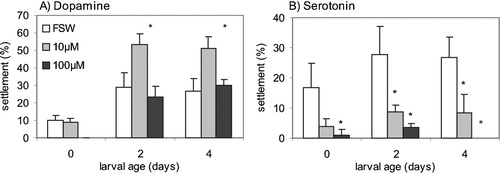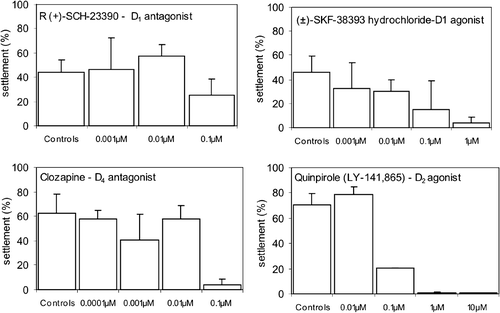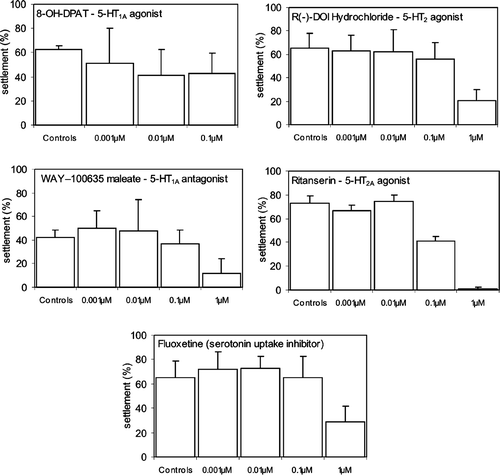Figures & data
Figure 1 Settlement process of cyprid larvae ofBalanus improvisus. A, Cyprid larvae exploring the substrate by flicking their antennulae; scale bar 500 µm (ant: antennulae; ta: thoracic appendages). B, Cyprid larva in permanent attachment, after cement secretion. C, Juvenile after ecdysis; scale bar 300 µm.

Table I. The pharmacological agents tested in the present study, their reported endogenous targets in vertebrates and their respective chemical structures.
Figure 2 Effects of dopamine and serotonin on the settlement rate ofBalanus improvisus cyprids. The experiment used different concentrations of the two agents in combination with different larval age (d0, d2 and d4). Results are shown as mean settlement (%) as observed two days after the beginning of the experiment±SE. *Significantly different from controls.

Figure 3 Effects of different concentrations of dopamine receptor agonists and antagonists on the settlement rate ofB. improvisus newly hatched (day 0) cyprids. The bars represent mean settlement (%) observed 6 days after the beginning of the experiment±SD. Concentrations in which settlement is lower than 1% are not presented in the figure but listed in Table . *P⩽0.05; **P⩽0.01; ***P⩽0.001; ****P⩽0.0001.

Figure 4 Effects of different concentrations of serotonin receptor agonists, antagonists and of the serotonin uptake inhibitor on the settlement ofB. improvisus newly hatched (day 0) cyprids. The bars represent mean settlement (%) observed 6 days after the beginning of the experiment±SD. Concentrations in which settlement was lower than 1% are not presented in the figure but listed in Table . *P⩽0.01; **P⩽0.001; ***P⩽0.0001.
